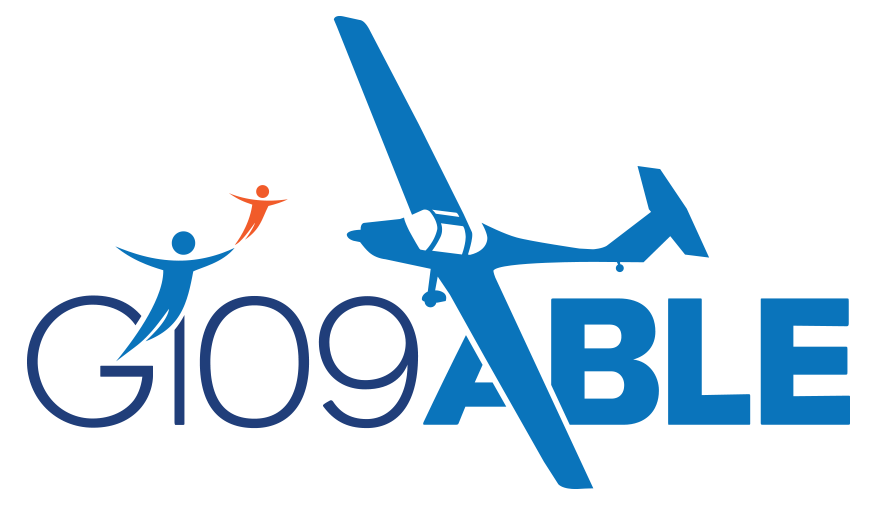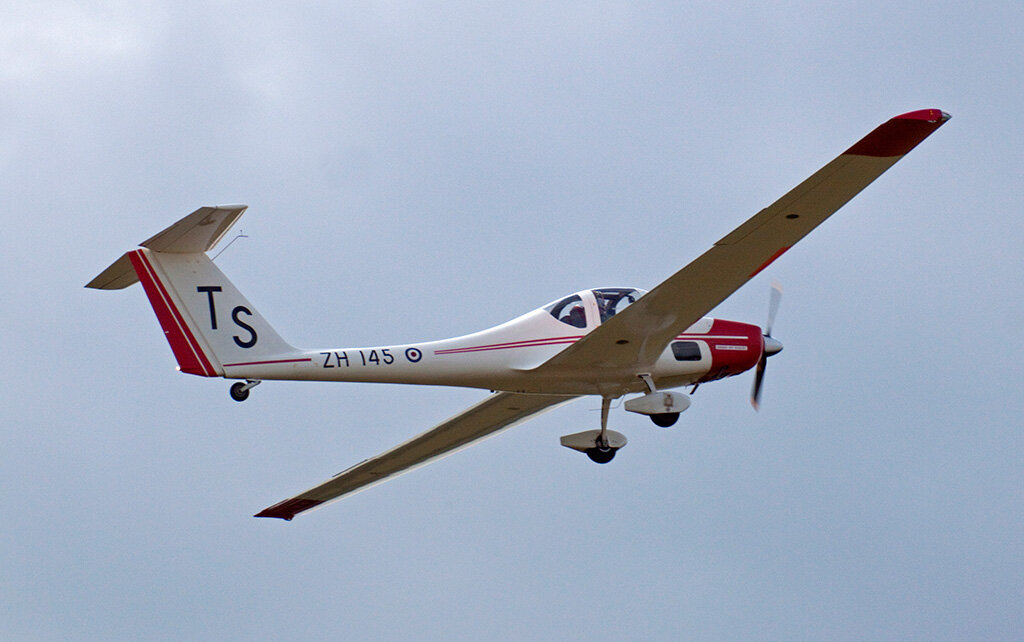
Frequent questions about Project Able
What is the Grob 109 ‘Vigilant’ and what was it used for in the RAF?
The Grob 109 is a Touring Motor Glider. The type had its first flight in 1980. A sixty-strong fleet of the Grob 109B T1 ‘Vigilant’ variant was operated by the RAF No. 2 Flying Training School for use on Volunteer Gliding Squadrons with Air Cadets up until May 2018. It was used for Air Experience flights to give Air Cadets basic flying appreciation.
Shouldn’t they just have been scrapped?
Although scrapping them was theoretically an option, and indeed some articles published at the time erroneously reported they ‘would probably be scrapped’, to do so would have been a waste if there was a more constructive alternative. The RAF and MoD therefore took steps to consult widely with potential partners and regulators, to explore ways of returning them to flight safely.
Now that they don’t have the Vigilants anymore, are the Air Cadets going to stop flying?
No. The RAF has decided to focus on gliding as the best immersive flying experience for Air Cadets. Spending a whole day on the airfield, Cadets can get involved with unpacking the hangar, operating the launch site, winch launching, ground handling of the aircraft, etc., as well as having experience of actually flying in the aircraft. The Viking glider has been renovated and retained for this purpose.
Why weren’t individuals or clubs given the opportunity to buy any of these aircraft?
Because it would have been beyond the technical or financial means of any individual or club to build and implement a comprehensive safety case for return to service of the type.
Individuals and clubs will however have the opportunity to buy examples of the modernised and improved Grob 109 (designated the Grob 109 ‘Able’).
How can I find out more about the modernised Grob 109 ‘Able’?
Please make contact using the methods detailed on the website and your enquiry will be passed to the person best suited to discussing it with you. We have experts on all aspects of the aircraft and its operation working with us, so we are sure to be able to find someone well-placed to answer your particular queries.
Is Aerobility going to make a profit from this project?
Profit is not the main objective of this project. It was conceived with the dual aim of returning these aircraft to flight, and providing Aerobility with aircraft for its own use. The aircraft that are sold to third parties will need to make enough profit to fund those that will be retained by Aerobility for its own charitable activities.
These aircraft, once recertified and modernised, have got another 25 years plus of active service in them, creating Air Smiles and life-changing experiences for so many.
Even though Aerobility is a charity, the project has to be run in a commercially responsible manner; it must not make a loss. For this reason, Aerobility has delegated implementation to a trading subsidiary set up for the purpose: Aerobility Holdings Community Interest Company (CIC). The CIC will oversee day-to-day running of the project and remit any residual profits to Aerobility at the end.
Why was the Grob 109 ‘Vigilant’ withdrawn from service by the RAF?
In May 2018, the Vigilants had to be withdrawn from service because irregularities were discovered in their maintenance records, making it impossible to be 100% sure that any given aircraft in the fleet had been maintained completely in accordance with statutory and RAF requirements.
What did the RAF and the MoD do when they decided to try not to scrap them?
They invited proposals from interested parties who had the potential to design and implement a robust safety case to get this many Vigilants recertified for flying again in a beneficial social context. The ideal was to reflect the societal benefit that had been gained from their use in the Air Cadets organisation.
How did Aerobility come to obtain the Vigilants for refurbishment?
The RAF and MoD invited proposals from interested parties. Two organisations reached the final selection stage. Aerobility was selected as the one with a credible business plan, a robust safety case, sufficient experience, contacts and, crucially, a key position as the main provider of flying for social benefit in the United Kingdom.
So what is Aerobility going to do?
With a grant of seed money from the DfT, Aerobility is now working with Grob itself and with Southern Sailplanes in the United Kingdom to return as many of these aircraft to flight as possible, including a number to be adapted for use by disabled students and pilots in the UK.
The refurbished aircraft will be completely modernised, with Rotax engines, a choice of avionic fits, and different trim/finish options. Those aircraft that are not adapted for use by Aerobility will be offered for sale to clubs and individuals worldwide, with any profit going towards funding the adapted aircraft retained by Aerobility, and the expansion of Aerobility’s activities to more bases throughout the UK.
How much will the modernised Grob 109 Able cost to buy?
There will be a choice of different levels of instrumentation, avionic fit and trim. There will also be an option adapted for use by disabled pilots. The pricing will depend on these factors, of course.
At the time of writing, we are still at an early stage of recertification work and are currently studying the projected costs of the various options. Pricing will be announced when we know more.
Who is Aerobility working with on this project? ?
Our principal technical partners are
Grob Aircraft SE in Tussenhausen-Mattsies, Germany, and Southern Sailplanes in Membury, United Kingdom.
Grob is of course the original manufacturer of this aircraft and they are uniquely well-qualified to implement the process of prototype development and certification of the updated type. They will also be undertaking the modernisation and refurbishment of the first few production airframes prior to releasing a conversion kit for use by approved third parties.
Southern Sailplanes are experts on composite aircraft generally, and particularly on composite gliders of all types. They have worked closely with Grob on other projects. They will undertake conversion work on the bulk of the airframes, using the kits and processes specified by Grob.
The Welsh Government are our principal partners for storage of the airframes awaiting modernisation.
We have also consulted closely with (and continue to consult) the Civil Aviation Authority, Military Aviation Authority, Ministry of Defence and Department for Transport.
I read somewhere that they were considered unsafe. Is that true?
They were not considered unsafe. Unfortunately, however, the irregularities in their maintenance records, made it impossible to be 100% sure that any given aircraft in the fleet had been maintained correctly. Thus they could not be verified as complying with maintenance safety requirements.
Why didn’t the RAF just restore the Vigilants to flying status themselves?
After review, the RAF has decided to focus on gliding as the best immersive flying experience for Air Cadets. Spending a whole day on the airfield, Cadets can get involved with unpacking the hangar, operating the launch site, winch launching, ground handling of the aircraft, etc., as well as having experience of actually flying in the aircraft. The Viking glider has been renovated and retained for this purpose.
In contrast, the experience of simply jumping into a Vigilant with the engine running, flying and then going home again was considered not as truly engaging or interactive for the Cadets.
Did Aerobility buy the airframes or were they donated?
Aerobility bought the airframes.
How much did Aerobility pay for the airframes?
We cannot make this figure public, for the following reason:
The objective of the project is to return as many of these aircraft to flight as possible, and to make available up to eight as specially adapted aircraft to join the Aerobility fleet
To succeed in these objectives the project must be able to sell sufficient refurbished airframes at a certain profit level, in other words, the project must stand on its own two feet commercially
There is not a simple relationship between the cost paid per airframe and the price we can sell refurbished airframes at, because:
not all purchased airframes will turn out to be refurbishable at a commercial cost, so we don’t know yet how many airworthy aircraft we will have altogether
the profit made from aircraft sold to third parties must pay for the cost of making the adapted aircraft for Aerobility’s use
If the cost of the airframes to Aerobility were to be made public, it might give a misleading impression of what the likely sale price of refurbished aircraft would be, and therefore prejudice our commercial freedom to set a sale price that is both acceptable to the market and meets the charitable aims of the project.
What if some of the airframes are found to be unsuitable for modernisation, due to damage for example?
Any airframes that are found not to be beyond economic repair / refurbishment will be put to good use in other ways. For example, some may be donated to technical colleges to help in Science Technology Engineering and Mathematics (STEM) education.



